The revolt against reason: The culture war and the fight to save rationality
Fred Hutchison, RenewAmerica analyst
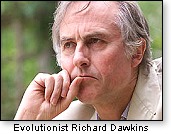 Originally published October 29, 2005
Originally published October 29, 2005
The culture war is part of a collision of two worldviews. Can the disagreements between these worldviews be settled through rational discussion? This can only happen if both sides are amenable to reason. If one side withdraws from the interaction of ideas and throws up defenses against reason, the possibility of authentic conversation is negated.
One of the assumptions in the works of the popular theologian Francis Schaefer (1912-1984) is that postmodern liberalism is in revolt against reason. The fatal turn against reason in the West, he believed, began over two centuries ago and has made intermittent gains since then. The present postmodern renunciation of reason has reached a high water mark of irrationality. I hope to offer an abbreviated history of the revolt against reason in another paper.
The Left is terrified of a thinking conservative's powers of reason, and some of them characterize our rationality as abusive, insensitive, and chauvinistic. For example, Richard Dawkins, the unofficial leader of the evolution movement, called Intelligent Design (ID) scientists "bully boys," in the 11/05 edition of Natural History. Dawkins offered no example of bullying, of course. The relentless rationality of ID scientists is indeed intimidating, in the sense that powerful ideas can intimidate the weak-minded. We might take pity on Mr. Dawkins, who feels "bullied" by ideas that clash with his own, except that he uses power and intimidation through the science establishment to silence the voices of dissent.
The false accuser of bullying is himself the chief bully boy of the evolution establishment. The waning of reason within that establishment makes possible the substitution of indoctrination and power for reason and persuasion. When men retreat from reason and authentic dialog withers, they resort to brutal tactics in their quest for power and their struggle to defeat their enemies.
The smile of reason
The only thing we can do for the unreasoning Left, at present, is to appeal to them to come out of their hiding place of irrationality and meet us in the sunshine of reason. However, if they hug the darkness and refuse the light, we have the consolation that there are bystanders of moderate opinion who are listening to the debate and are open to our arguments if we frame them clearly and rationally. Conservatives must learn to think, speak, and write in a way that appeals to reason as understood by the moderate bystander.
At the same time, we must resist the temptation to compromise our message or dumb it down. Reason can be lost by the lack of cultivation of the intellectual powers. We must summon the drifting moderate to rise up to reason. If we sink down into a mediocre conceptual vagueness, supposing that a flabby message will reach a wider audience, the cause of reason will be lost. After a long period of self-indulgent cultural and intellectual dumbing down, many people are tired of being coddled, manipulated, and pandered to and are hungry for a message that will challenge them. Let us challenge those who are seeking truth, to ascend to reason.
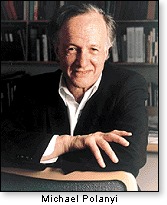 As we challenge people with reason, we must let them know that ascending to reason can be a joyful experience. There is a quiet pleasure in reasoning, a delight in understanding, and a positive joy at that moment when one believes a concept to be true.
As we challenge people with reason, we must let them know that ascending to reason can be a joyful experience. There is a quiet pleasure in reasoning, a delight in understanding, and a positive joy at that moment when one believes a concept to be true.
Michael Polanyi (1891-1976), Hungarian scientist turned British philosopher, offered persuasive evidence that the moment a scientist believes a proposition or model to be true, energy and excitement wells up within him and the knowledge becomes personal. The enchanted moment one believes a conceptual model to be true is like falling in love. One experiences the joy of reason.
Both Descartes and Rousseau had a moment of light and euphoria when they were captured by a great idea upon which all their subsequent writing was based. Men who read the Principia (1687) of Sir Isaac Newton were sometimes filled with elation as Newton's ideas became understandable to them and they entered a new clarity of thought with joy. Alexander Pope, English essayist and poet wrote, "Nature and nature's light lay hid in night. / God said let Newton be! And all was light!"
The conservative who is enchanted by ideas compares favorably with the dismal gloom of the postmodern liberal who no longer believes in reason. Let us be happy warriors as we combat our doleful opponents. Allow men to compare our smile of reason with the frown of cynicism of our opponents.
Lord Byron (1788-1824), an English poet of the Romantic movement, rejected both Christ and reason, twin renunciations that are very common among atheists. Byron had a dream that the sun was extinguished and wrote about it in a poem titled "Darkness" (1816), which is one of the most frightening poems in the English language. He called the darkness "the pall of a past world," in which men were falling into the dust gnashing their teeth and howling with terror. The two great lights of Christ and reason had gone out for Byron, and his dreams were tormented by the horror of a great darkness. In 1824, Byron, at age 36, wrote a poem that included this groan of despair: "The flowers and the fruits of love are gone. / The worm, the canker and the grief are mine alone."
 Nowhere is the gloom of unreason deeper than in academia. I watch college students walking slumped as they gaze upon the sidewalk, and I wonder what they have to be sad about. If a professor has just extinguished the light of reason in them, they have a lot to grieve about. A part of their humanity has been crushed.
Nowhere is the gloom of unreason deeper than in academia. I watch college students walking slumped as they gaze upon the sidewalk, and I wonder what they have to be sad about. If a professor has just extinguished the light of reason in them, they have a lot to grieve about. A part of their humanity has been crushed.
The domination of powerful, elite institutions by postmodern liberals who hate reason is a grave danger to the Republic. No civilization that renounces reason can long survive. It is up to the conservative movement and doctrinally orthodox Christianity to rescue the floundering cause of reason. This is a battle that, with God's help, we must win.
It is surprising how many issues in the culture war involve the revolt against reason by the Left. The remainder of this essay is concentrated mostly upon the invasion of irrationality into the fields of biology, physics, and law. In subsequent papers, I hope to extend this survey of reason and unreason to culture war issues with moral dimensions, and to the high arts and literature.
Institutional science: moving away from reason
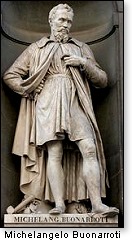 Michael Polanyi explained how rationality must work in science, in his book Personal Knowledge: Towards a Post-Critical Philosophy (1958). He wrote that all knowledge involves the observation of order against the background of randomness. Allow me to modify this concept to say, all rational knowledge that a scientist or an engineer can obtain directly from their work in science or engineering involves the observation of order against a background of randomness.
Michael Polanyi explained how rationality must work in science, in his book Personal Knowledge: Towards a Post-Critical Philosophy (1958). He wrote that all knowledge involves the observation of order against the background of randomness. Allow me to modify this concept to say, all rational knowledge that a scientist or an engineer can obtain directly from their work in science or engineering involves the observation of order against a background of randomness.
An artist or composer seeking harmony and beauty does indeed seek order in the midst of chaos. The great Renaissance sculptor Michelangelo Buonarroti used his chisel to free human forms that he imagined were trapped in the marble. He regarded the dusty debris he chipped off a block of marble as a random matrix of rock that trapped the statue people inside. His mission was to rescue the statue people and bring them into the light. One aspect of the grandeur of Michelangelo's sculptures was the triumph of reason they represented. However, his talent was not limited to reason. He used his aesthetic senses, his imagination, and his love of beauty. Therefore, we must avoid Polanyi's implication that no other kind of knowledge is available but the rational capacity to perceive order.
Michelangelo's statues teach us that beauty is consonant with reason. Modern scientists have lost the love of beauty. Interestingly, scientists in the age of Kepler, Copernicus, and Newton were highly appreciative of beauty. The scientific instruments of that era looked like works of art. Reason, beauty, imagination, and faith prevailed in those enchanting and ennobling early days of science. Today, the beautiful child of science has grown into an ugly, cramped, and cynical adult, one who rejects beauty, faith, and reason.
Random evolution
Darwin's original model of evolution by natural selection was more logical than the present evolution model. The survival of the fittest had a certain logic to it that helped to compensate for the accidental nature of the development of a species. However, the discovery of DNA in 1953 by James Watson and Francis Crick led to a crisis for the evolution model. DNA brought evolutionists to an unavoidable realization that natural selection can produce variations within a species (micro-evolution), but cannot change one species into a new species (macro-evolution). New information must be introduced into the genetic code (DNA) in order to produce a new species. Natural selection cannot provide this new information. Furthermore, the new information must be integrated harmoniously into an orderly new system of biological parts. Hence, a new species cannot be produced by natural selection alone.
 The evolutionists revised their model to hypothesize that gene mutations provide the new information in the DNA for the evolution of a species. However, mutations are random and involve damage to the genes. The evolutionists have yet to explain how the new information is to be integrated into the orderly system of a new species. Every species represents a harmonious, orderly system of biological parts, and every species has a unique system all its own.
The evolutionists revised their model to hypothesize that gene mutations provide the new information in the DNA for the evolution of a species. However, mutations are random and involve damage to the genes. The evolutionists have yet to explain how the new information is to be integrated into the orderly system of a new species. Every species represents a harmonious, orderly system of biological parts, and every species has a unique system all its own.
Gene mutations cannot design a system. The right information inserted into the wrong system is useless. The pancreas genes of a porcupine are worthless to a man because the human biological systems are different. A new system for a new species must have an orderly design – and each species has a unique design that represents a high level of order. According to Polanyi, a high level of order cannot come to being through random events. To assume that order can accidentally appear amidst chaos is to indulge in magical thinking and to deny reason.
Gene mutations are accidental changes in genetic information that occur randomly. Mutations represent damage to genes that usually result in pathologies or death. How can such contaminated and mangled data provide the basis for developing a new species? Can these fractured genes even be thought of as "new information"? Are they not corrupted old information? Are we to build a fresh new species from broken genes? One has to suspend the reasoning powers to go along with the post-DNA evolutionary model.
A mutation is a malfunction of the genetic code. A malfunction of sophisticated equipment disables the equipment, rather than making it more efficient. In the rare cases in which a mutation is not disabling, it can only move the system to a lower degree of order, not to a higher degree of order. In contrast, the assembly of an integrated system is always a move up in the degree of order, because a system embodies a higher level of order than a collection of parts. A table full of jigsaw parts resembles chaos, but the completed puzzle has order and presents a coherent picture that is printed upon the surface of the connected pieces.
 Suppose one randomly selects a few jigsaw pieces from a table top, and he damages the pieces by cutting, tearing, and crushing. Then he scatters the damaged pieces amidst the pieces on the table. Now the puzzle cannot be solved. Just a few damaged pieces would introduce an incurable disorder that would defy the rational powers of the puzzle solver.
Suppose one randomly selects a few jigsaw pieces from a table top, and he damages the pieces by cutting, tearing, and crushing. Then he scatters the damaged pieces amidst the pieces on the table. Now the puzzle cannot be solved. Just a few damaged pieces would introduce an incurable disorder that would defy the rational powers of the puzzle solver.
The evolution model holds that if one repeats the insertion of damaged parts often enough, perhaps millions of times, a new order will emerge with a new picture. Instead of a landscape painting revealed in the completed jigsaw puzzle, we will get a picture of a vase of flowers. This is nonsense, of course. Each new round of inserting damaged pieces into the puzzle will move the collection of pieces further in the direction of disorder, never in the direction of order. A million rounds of random damage to puzzle pieces will produce pure chaos. Instead of a landscape painting, one will get a grey fog.
An accumulation of mutations can never create a higher degree of order, or a new species. A species will go extinct after the first few rounds of mutations, just as a jigsaw puzzle cannot be solved after a few rounds of damaged pieces. The reason why most species do not go extinct is that breeding outside of immediate family members introduces a fresh line of genes that can bypass the lethal mutations. Dual genders are God's plan to triumph over accumulating corruptions. It also works against the idea that evolution can proceed through mutations. Every time a creature breeds, his mutations are superseded.
 Just as the marriage of those who are not biologically related bypasses inherited mutations, the wholesome, stable, faithful marriage of a man and woman can shelter the children from the passing down of the accumulating moral corruptions of prior generations, and from the general wickedness of society. A "family curse" is passed down through weak and broken marriages, illegitimate sexual unions, and the marriage of close relatives. The shattering of marriages and the separation of sex from marriage leads to the accumulation of moral corruptions and psychological disorders in a society. The breakdown of the family must lead to increasing disorder in society.
Just as the marriage of those who are not biologically related bypasses inherited mutations, the wholesome, stable, faithful marriage of a man and woman can shelter the children from the passing down of the accumulating moral corruptions of prior generations, and from the general wickedness of society. A "family curse" is passed down through weak and broken marriages, illegitimate sexual unions, and the marriage of close relatives. The shattering of marriages and the separation of sex from marriage leads to the accumulation of moral corruptions and psychological disorders in a society. The breakdown of the family must lead to increasing disorder in society.
Just as promiscuous sex must lead to social disorder, the accumulation of mutations must lead to pathological disorders and the extinction of a species. The evolutionists have yet to produce a single example of mutations that lead to macro-evolution – precisely because mutations cannot lead to a higher order. All the examples offered by evolutionists of change through mutations are variations within a species, and many such changes involve the introduction of a pathology. For example, thoroughbred horses are often psychotic, frequently sick, and prone to far more diseases than humans contract. Inbreeding to produce champion race horses results in a frail and unstable breed, due to the accumulation of mutations. However, no one can mistake a beautiful thoroughbred horse for any other species than a horse.
The evolutionist's vain search for "constructive mutations," if such a thing is possible, trains their minds to tune out order and to search for randomness. Polanyi's axiom – that all that scientists can rationally know is patterns of order against a background of randomness – directly contradicts what the evolutionists are trying to do with their research. Therefore, working within the evolution model tends to make one less rational. One has to close down his rational powers and indulge in magical thinking to envision the emergence of order from disorder. Irrational people posing as rational people often cheat to get the desired results of their ill-conceived experiments. Evolutionists routinely report micro-evolutionary variations with a species as macro-evolutionary developments of new species – which is a fraud. However, they are not yet brazen enough to call a thoroughbred horse a new evolutionary species.
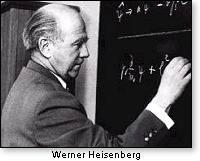 Meanwhile, Intelligent Design scientists are focusing their attention upon the order of complex integrated systems as the design of species. They are developing a new science of rationality. Just as the rational Polanyi moved from science to the philosophy of knowledge (epistemology), a new rational philosophy of human nature as a product of intelligent design is inevitable. Amidst the jungle of irrationality, rationality is making a comeback. Reason, as an innate faculty of human nature, cannot be suppressed forever.
Meanwhile, Intelligent Design scientists are focusing their attention upon the order of complex integrated systems as the design of species. They are developing a new science of rationality. Just as the rational Polanyi moved from science to the philosophy of knowledge (epistemology), a new rational philosophy of human nature as a product of intelligent design is inevitable. Amidst the jungle of irrationality, rationality is making a comeback. Reason, as an innate faculty of human nature, cannot be suppressed forever.
Quantum mechanics
Werner Heisenberg (1901-1976) was one of the founders of Quantum Mechanics, a theory about atomic physics. Heisenberg made the assumption that atomic radiation was caused by particles. He studied these particles through "matrix mechanics," which is a statistical method. A contemporary of his, Erwin Schrödinger (1887-1961), concluded that radiation followed wave mechanics that measure vibration frequencies of electron matter waves. Both Heisenberg and Schrödinger had successful laboratory experiments. In 1926, Schrödinger published a paper that mathematically proved that matrix mechanics and wave mechanics give the same results. As it turned out, the mathematical correspondence of the two theories was not confirmed by experiment.
Niels Bohr (1885–1962), was a pioneer in the theory of the quantum structure of atoms that incorporates the idea that electrons can leap from one orbital shell to another. Bohr, who was Heisenberg's mentor, met with Heisenberg and Schrödinger for many hours to resolve the differences between the two men. Heisenberg, a young theoretical genius, was violently opposed to Schrödinger's ideas. Bohr, through herculean patience, and the help of Albert Einstein, eventually brought the two men to a compromise, which was to be called the "Copenhagen interpretation," or the "Copenhagen doctrine" (1927).
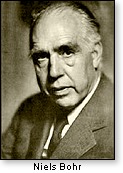 Einstein contributed the concept of simplicity as the essence of scientific realism, and coauthored with Bohr the "complementary doctrine," which posited that radiation behaves as both a wave and a particle, two aspects of the same phenomenon. However, Einstein walked away skeptical of Heisenberg's matrix mechanics based upon mathematical statistics, and said, "God does not play dice with the universe." Einstein was a philosophical rationalist and realist, and did not like the idea of an accidental universe. As a rationalist, Einstein sought orderly systems, and as a realist he believed that "things are really out there," and have objective existence.
Einstein contributed the concept of simplicity as the essence of scientific realism, and coauthored with Bohr the "complementary doctrine," which posited that radiation behaves as both a wave and a particle, two aspects of the same phenomenon. However, Einstein walked away skeptical of Heisenberg's matrix mechanics based upon mathematical statistics, and said, "God does not play dice with the universe." Einstein was a philosophical rationalist and realist, and did not like the idea of an accidental universe. As a rationalist, Einstein sought orderly systems, and as a realist he believed that "things are really out there," and have objective existence.
Unfortunately, the complementary principle did not work. A researcher had to experiment with atomic radiation as either particles or waves, but never both. The outcomes of experiments were dependent on the tools of measurement, and the tools used to measure particles were different from the tools for measuring waves. The results of the two ways of measurement were always different, never the same.
Einstein, Bohr, Heisenberg, and Schrödinger, the four greatest pioneers of nuclear physics of the twentieth century, had met together and come up with a paradoxical and problematical compromise at Copenhagen. Were these great men guessing? Were they papering over an incurable conflict between Heisenberg and Schrödinger? Were they so dazzled with Schrödinger's mathematics that they were blind to the laboratory evidence? Was viewing radiation as both particles and waves a logical contradiction?
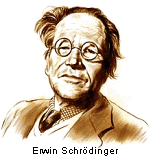 The 26-year-old upstart Heisenberg was reduced to tears, as he argued with the three great men of physics, all of them exalted by fame and all old enough to be his father. Was he cowed into submission? Did the sullen Heisenberg and the dubious Einstein foreshadow a rocky future for Quantum Mechanics? Yes. Quantum Mechanics has been in an uproar ever since the Copenhagen compromise, and has fallen into quarreling factions. Scientists still cannot agree whether light is a particle, a wave, or both.
The 26-year-old upstart Heisenberg was reduced to tears, as he argued with the three great men of physics, all of them exalted by fame and all old enough to be his father. Was he cowed into submission? Did the sullen Heisenberg and the dubious Einstein foreshadow a rocky future for Quantum Mechanics? Yes. Quantum Mechanics has been in an uproar ever since the Copenhagen compromise, and has fallen into quarreling factions. Scientists still cannot agree whether light is a particle, a wave, or both.
The uncertainty principle
Heisenberg's famous "uncertainty principle" also has stirred up a great deal of trouble and scientific doubt. Heisenberg was not able to reconcile the measurement of the position of an electron with the momentum (Momentum = Mass x Velocity). He said, "The more precisely the position is determined, the less precisely the momentum is discovered, and vice versa." Obviously, knowing the momentum without knowing much about the position is not very helpful. Knowing about position without knowing much about the momentum or direction of rapidly spinning electrons is a questionable bit of information.
To make matters even more indeterminate, all the researcher can know through matrix mechanics is statistical probabilities. What is worse, Heisenberg concluded that the act of experimental observation changes what one is looking at. He called this the "uncertainty principle." Polanyi modified the uncertainty principle by insisting that it is not the observation that changes the phenomena, but the intrusion of the measuring tools. If you are measuring soft clay with a ruler, and the ruler leaves deep dents in the clay, the tool has corrupted the measurement.
Based upon these troublesome uncertainties, one might suppose that Heisenberg would be modest about drawing conclusions. Unfortunately, there was no modesty in Heisenberg's nature. He projected his uncertainties into a theory of science and into a philosophy. He denied the principle of causality – that every determinate cause in nature is followed by a resulting effect – and substituted probability. Polanyi agreed that the introduction of statistics rules out knowing about causality. However, unlike Heisenberg, Polanyi does not rule out the existence of causality. Therefore, Polanyi held onto rationality and Heisenberg cast it aside. It is extremely difficult to prove causality, but to deny that causality exists is irrational.
Heisenberg rejected philosophical realism and asserted that electron orbits in nature do not exist unless we observe them. Madness? Yes. The instant one denies that things are out there if he cannot see them, he has withdrawn from reason and has retreated into the illusions of solipsism and philosophical idealism. This denial that unobserved things are out there is a continuation of the fallacy of German philosophical idealism, which emerged during the first half of the nineteenth century. Heisenberg's version of this madness was a sort of intellectual chauvinism that usurps the role of creator and destroyer.
The destroyer of worlds
 We should not be surprised that Heisenberg was comfortable with chauvinistic, egoistic irrationality because he became a Nazi. He supervised a network of labs and attempted to produce an atomic bomb for Hitler. What must Heisenberg have been thinking? A phrase quoted by Robert Oppenheimer, as he witnessed the first atomic explosion at the Trinity site in New Mexico, June 1945, comes to mind. "I am become Death, the Destroyer of worlds" (The Bhagavad-Gita).
We should not be surprised that Heisenberg was comfortable with chauvinistic, egoistic irrationality because he became a Nazi. He supervised a network of labs and attempted to produce an atomic bomb for Hitler. What must Heisenberg have been thinking? A phrase quoted by Robert Oppenheimer, as he witnessed the first atomic explosion at the Trinity site in New Mexico, June 1945, comes to mind. "I am become Death, the Destroyer of worlds" (The Bhagavad-Gita).
Niels Bohr, Heisenberg's mentor, was a Jew, and fled for his life from the Nazis. Ironically, Bohr's suggestion to Heisenberg that he should regularly test his theories with mathematics gave the German nuclear program a boost forward. What must Bohr have been thinking? Though the chosen people of Israel be destroyed, science must advance? Did science replace Jehovah as Bohr's God?
Had it not been for Hitler's foolish tampering and meddling with Heisenberg's labs, and his policies that drove the Jewish scientists to America, Germany might well have been the first to get the bomb. Heisenberg and his team were more advanced in atomic theory that his American counterparts – but the Americans had better mathematicians and engineers, better funding and staffing, and fewer interruptions from the government. Hitler armed with nuclear weapons would have conquered or destroyed the world. His maniacal lusts and occult fantasies were war for the sake of war, world conquest, destruction, and death. "I am become Death, the Destroyer of worlds."
Was the handsome young Heisenberg an evil genius, driven half-mad by his grandiose theories and dreams of glory? Of course he was. His denial of causality and the objective existence of natural substances and events undercut reason, a faculty designed to perceive order in nature. Reason helps to keep us sane, balanced, and modest. When Heisenberg let go of reason, and let in the dark forces of irrationality, he became unhinged.
The release of the reigns of reason by powerful men is like releasing savage dogs who are straining at the leash. "Cry havoc, and let slip the dogs of war!" (Julius Caesar, by Shakespeare). The shout "Cry havoc!" was once was a military call to unleash soldiers for pillaging and plundering, resulting in a violent state of anarchy and social chaos. One who relinquishes the reigns of reason and order can then let the mindless and ravenous "dogs of war" slip free from their restraining leash.
Heisenberg's uncertainty principle broke free from its leash and spread throughout Western culture. His wild, sweeping generalities – launched from a self-contradictory foundation – could never have become so popular if the Western cultural elites had not developed a bias against reason.
Evolutionists hail the compatibility of random evolution with Heisenberg's uncertainty principle. The bias against reason continues to seep through Western science and culture.
 Irrational law
Irrational law
Supreme Court Justice Antonin Scalia had shrewd insights on rational and irrational law in a book review he wrote for First Things 11/05. The book he reviewed was "Law's Quandary," by Steven Smith. Scalia uses the book review to become a premier law professor once more, and to give us, his students, an invaluable lesson in the law.
Scalia gives examples in which jurists continue on a rational course even though they think they are following a theory of law that is irrational. One of Francis Schaefer's consistent themes was that postmodern liberals cannot live according to the assumptions they have made about the world. Their lives invariably are contradictions or compromises with their worldview. The same is true of law. Jurists instinctively understand that if they consistently practice jurisprudence according to the irrational theories they learned in law school, the legal system would collapse and society would be cast into chaos. Therefore, a huge difference between practical jurisprudence and legal theory has evolved.
The stability and order of the American system of law and government allows for incremental judicial experiments with irrational law without inflicting fatal damage to the system in the short run. However, the damage can be cumulative and eventually crippling. The accumulating damage will continue until such time as rational law is restored. If the moderate judges on the high court would hearken to Scalia, the restoration of rational law could begin immediately.
Scalia says that the creation of law by judicial fiat is no law at all. It is arbitrary power in the guise of law. To refer to such usurpations as "law" is irrational. Rational law requires the discovery of law by the judge, not the invention of law by the judge. The judge discovers the law from the Constitution, statutes, and legal precedents.
"Stare decisis" (to stand by things decided) – which means to follow the precedents of prior court decisions – only makes sense in a rational legal system where jurists discover the law. Under an irrational system where judges invent the law, stare decisis makes no sense. The law schools teach both judicial activism and stare decisis and do not seem to notice the contradiction. If liberal judges were to consistently invent the law ad hoc as they go along, the rule of precedent would cease. The last thing that those who are addicted to creating law want to hear about is legal precedent.
 The great traditionalist conservative Russell Kirk celebrated the virtues of English common law, but he failed to notice a built-in contradiction evident to Scalia. Most of the body of common law came into being through decisions by local judges ruling on specific cases. Although the judiciary was creating law, the judges leaned heavily on precedent. As we have seen, stare decisis, and judges creating law is a contradiction. Scalia informs us that the English common law judges did not believe they were creating law. They thought they were discovering law. As Christians, they looked to an "overarching, omnipresent law," which would guide them in discovering the law in specific cases. They were willing to lean upon precedent because they had confidence that Christian judges who went before them were seeking to discover law, guided by a higher law that reigns above the earthly law.
The great traditionalist conservative Russell Kirk celebrated the virtues of English common law, but he failed to notice a built-in contradiction evident to Scalia. Most of the body of common law came into being through decisions by local judges ruling on specific cases. Although the judiciary was creating law, the judges leaned heavily on precedent. As we have seen, stare decisis, and judges creating law is a contradiction. Scalia informs us that the English common law judges did not believe they were creating law. They thought they were discovering law. As Christians, they looked to an "overarching, omnipresent law," which would guide them in discovering the law in specific cases. They were willing to lean upon precedent because they had confidence that Christian judges who went before them were seeking to discover law, guided by a higher law that reigns above the earthly law.
Liberals scoff at an overarching, omnipresent law and dismiss it as a cloudy, vague mysticism. Quite to the contrary, exploring the metaphysics of law requires a high order of intelligence, and brings forth the fruits of rational law. The metaphysical brilliance of James Madison, the author of the Constitution, enabled him to lay the foundations of the American system of rational law. In contrast, the liberal approach to ad-hoc legal decisions and the invention of law out of whole cloth brings forth legal opinions that are cloudy, vague, and self-contradictory.
Scalia explains the fascinating concept of retroactive law. Suppose a legislature passes a statute in the year 2001. Citizen Smith is accused of violating the law in 2002, but he argues that his action did not violate the law. A court convenes in 2003, and rules that Smith violated the law. Smith appeals to an appellate court in 2004, and claims that the court's opinion of 2003 created new law. To find him guilty of a law before the law existed violates the legal principle of ex post facto (after the fact). (For example, it is unjust for a court to find Jones guilty of playing dominos, if the law against dominos was enacted after Jones played the game for the last time.) The counsel for the government in the Smith case in the 2004 appeal argues that although the application of the court opinion of 2003 was applied retroactively to Smith's alleged violation of 2002, it did not violate the principle of ex post facto, because the court's opinion was a discovery of law (in this case, the statute passed in 2001), not a creation of law. In 2003, the court examined the legal principle of the law enacted in 2001, and interpreted that law to discover its application, and found Smith guilty. The appellate decision of 2004 rules against Smith. However, if the appellate court of 2004 determined that the lower court invented law in 2003, the ex post facto defense is valid and the appellate court rules in favor of Smith. The appellate court would have the option of striking down decision of 2003 as a legal precedent, if Smith's case had been against the legality of the decision, instead of the timing.
The hypothetical Smith case represents rational law. The rational judge can discern the difference between unjust ex post facto laws and just retroactive decisions. However, when judges invent the law as a matter of course, unjust ex post facto convictions will become the order of the day.
Some of the prisoners in Stalin's gulag were convicted on ex post facto law.
Suppose that a law was enacted against drinking schnapps after vindictive commissar Krazechev obtained a photograph of his enemy Innocentovich drinking schnapps. The Soviet kangaroo court accepts the photograph as evidence, ignores the timing of Krazechev's schnapps law, and sends Innocentovich to Sibera, even though he drank no schnapps after it became illegal. Hello arbitrary law. Farewell, reason, justice, and liberty.
 Scalia explores at length the attempt by liberal judges to reinterpret the words of laws to make them say what they want them to say. Scalia promotes the logocentric view – that words carry meanings that do not change over the passage of time. Even if the judge cannot determine the objectives of the legislator, a study of words in their logical context is enough to reveal the meaning, if the judge is seeking to discover the law. If the judge is seeking to create law, he will have endless quibbles with words and reinterpretations of what the words really mean. Unfortunately, when words are drained of their meanings, we can have neither law, nor reason, nor order, nor even a reasonable conversation with those of an opposing point of view.
Scalia explores at length the attempt by liberal judges to reinterpret the words of laws to make them say what they want them to say. Scalia promotes the logocentric view – that words carry meanings that do not change over the passage of time. Even if the judge cannot determine the objectives of the legislator, a study of words in their logical context is enough to reveal the meaning, if the judge is seeking to discover the law. If the judge is seeking to create law, he will have endless quibbles with words and reinterpretations of what the words really mean. Unfortunately, when words are drained of their meanings, we can have neither law, nor reason, nor order, nor even a reasonable conversation with those of an opposing point of view.
Conclusion
We have examined the contamination of biology, physics, and law with irrationality. No area of modern culture has been left unmolested by the postmodern liberal revolt against reason. Every issue in the culture war has an underlying theme of reason versus unreason. Let us arm ourselves with the weapons of reason and develop our skills in the use of these weapons. The trend of the great dumbing down must be turned around sometime. I can think of no better time than now.
God can deliver us from those dark forces that encroach upon the reasoning powers that he gave us and intends us to use. "God has not given us a spirit of fear but of power, and of love and of a sound mind." (2 Timothy 1:7) "God is not the author of confusion, but of peace." (1 Corinthians 4: 33)
 A message from Stephen Stone, President, RenewAmerica
A message from Stephen Stone, President, RenewAmerica
I first became acquainted with Fred Hutchison in December 2003, when he contacted me about an article he was interested in writing for RenewAmerica about Alan Keyes. From that auspicious moment until God took him a little more than six years later, we published over 200 of Fred's incomparable essays — usually on some vital aspect of the modern "culture war," written with wit and disarming logic from Fred's brilliant perspective of history, philosophy, science, and scripture.
It was obvious to me from the beginning that Fred was in a class by himself among American conservative writers, and I was honored to feature his insights at RA.
I greatly miss Fred, who died of a brain tumor on August 10, 2010. What a gentle — yet profoundly powerful — voice of reason and godly truth! I'm delighted to see his remarkable essays on the history of conservatism brought together in a masterfully-edited volume by Julie Klusty. Restoring History is a wonderful tribute to a truly great man.
The book is available at Amazon.com.
© Fred Hutchison
January 17, 2013
 Originally published October 29, 2005
Originally published October 29, 2005The culture war is part of a collision of two worldviews. Can the disagreements between these worldviews be settled through rational discussion? This can only happen if both sides are amenable to reason. If one side withdraws from the interaction of ideas and throws up defenses against reason, the possibility of authentic conversation is negated.
One of the assumptions in the works of the popular theologian Francis Schaefer (1912-1984) is that postmodern liberalism is in revolt against reason. The fatal turn against reason in the West, he believed, began over two centuries ago and has made intermittent gains since then. The present postmodern renunciation of reason has reached a high water mark of irrationality. I hope to offer an abbreviated history of the revolt against reason in another paper.
The Left is terrified of a thinking conservative's powers of reason, and some of them characterize our rationality as abusive, insensitive, and chauvinistic. For example, Richard Dawkins, the unofficial leader of the evolution movement, called Intelligent Design (ID) scientists "bully boys," in the 11/05 edition of Natural History. Dawkins offered no example of bullying, of course. The relentless rationality of ID scientists is indeed intimidating, in the sense that powerful ideas can intimidate the weak-minded. We might take pity on Mr. Dawkins, who feels "bullied" by ideas that clash with his own, except that he uses power and intimidation through the science establishment to silence the voices of dissent.
The false accuser of bullying is himself the chief bully boy of the evolution establishment. The waning of reason within that establishment makes possible the substitution of indoctrination and power for reason and persuasion. When men retreat from reason and authentic dialog withers, they resort to brutal tactics in their quest for power and their struggle to defeat their enemies.
The smile of reason
The only thing we can do for the unreasoning Left, at present, is to appeal to them to come out of their hiding place of irrationality and meet us in the sunshine of reason. However, if they hug the darkness and refuse the light, we have the consolation that there are bystanders of moderate opinion who are listening to the debate and are open to our arguments if we frame them clearly and rationally. Conservatives must learn to think, speak, and write in a way that appeals to reason as understood by the moderate bystander.
At the same time, we must resist the temptation to compromise our message or dumb it down. Reason can be lost by the lack of cultivation of the intellectual powers. We must summon the drifting moderate to rise up to reason. If we sink down into a mediocre conceptual vagueness, supposing that a flabby message will reach a wider audience, the cause of reason will be lost. After a long period of self-indulgent cultural and intellectual dumbing down, many people are tired of being coddled, manipulated, and pandered to and are hungry for a message that will challenge them. Let us challenge those who are seeking truth, to ascend to reason.
 As we challenge people with reason, we must let them know that ascending to reason can be a joyful experience. There is a quiet pleasure in reasoning, a delight in understanding, and a positive joy at that moment when one believes a concept to be true.
As we challenge people with reason, we must let them know that ascending to reason can be a joyful experience. There is a quiet pleasure in reasoning, a delight in understanding, and a positive joy at that moment when one believes a concept to be true.Michael Polanyi (1891-1976), Hungarian scientist turned British philosopher, offered persuasive evidence that the moment a scientist believes a proposition or model to be true, energy and excitement wells up within him and the knowledge becomes personal. The enchanted moment one believes a conceptual model to be true is like falling in love. One experiences the joy of reason.
Both Descartes and Rousseau had a moment of light and euphoria when they were captured by a great idea upon which all their subsequent writing was based. Men who read the Principia (1687) of Sir Isaac Newton were sometimes filled with elation as Newton's ideas became understandable to them and they entered a new clarity of thought with joy. Alexander Pope, English essayist and poet wrote, "Nature and nature's light lay hid in night. / God said let Newton be! And all was light!"
The conservative who is enchanted by ideas compares favorably with the dismal gloom of the postmodern liberal who no longer believes in reason. Let us be happy warriors as we combat our doleful opponents. Allow men to compare our smile of reason with the frown of cynicism of our opponents.
Lord Byron (1788-1824), an English poet of the Romantic movement, rejected both Christ and reason, twin renunciations that are very common among atheists. Byron had a dream that the sun was extinguished and wrote about it in a poem titled "Darkness" (1816), which is one of the most frightening poems in the English language. He called the darkness "the pall of a past world," in which men were falling into the dust gnashing their teeth and howling with terror. The two great lights of Christ and reason had gone out for Byron, and his dreams were tormented by the horror of a great darkness. In 1824, Byron, at age 36, wrote a poem that included this groan of despair: "The flowers and the fruits of love are gone. / The worm, the canker and the grief are mine alone."
 Nowhere is the gloom of unreason deeper than in academia. I watch college students walking slumped as they gaze upon the sidewalk, and I wonder what they have to be sad about. If a professor has just extinguished the light of reason in them, they have a lot to grieve about. A part of their humanity has been crushed.
Nowhere is the gloom of unreason deeper than in academia. I watch college students walking slumped as they gaze upon the sidewalk, and I wonder what they have to be sad about. If a professor has just extinguished the light of reason in them, they have a lot to grieve about. A part of their humanity has been crushed.The domination of powerful, elite institutions by postmodern liberals who hate reason is a grave danger to the Republic. No civilization that renounces reason can long survive. It is up to the conservative movement and doctrinally orthodox Christianity to rescue the floundering cause of reason. This is a battle that, with God's help, we must win.
It is surprising how many issues in the culture war involve the revolt against reason by the Left. The remainder of this essay is concentrated mostly upon the invasion of irrationality into the fields of biology, physics, and law. In subsequent papers, I hope to extend this survey of reason and unreason to culture war issues with moral dimensions, and to the high arts and literature.
Institutional science: moving away from reason
 Michael Polanyi explained how rationality must work in science, in his book Personal Knowledge: Towards a Post-Critical Philosophy (1958). He wrote that all knowledge involves the observation of order against the background of randomness. Allow me to modify this concept to say, all rational knowledge that a scientist or an engineer can obtain directly from their work in science or engineering involves the observation of order against a background of randomness.
Michael Polanyi explained how rationality must work in science, in his book Personal Knowledge: Towards a Post-Critical Philosophy (1958). He wrote that all knowledge involves the observation of order against the background of randomness. Allow me to modify this concept to say, all rational knowledge that a scientist or an engineer can obtain directly from their work in science or engineering involves the observation of order against a background of randomness.An artist or composer seeking harmony and beauty does indeed seek order in the midst of chaos. The great Renaissance sculptor Michelangelo Buonarroti used his chisel to free human forms that he imagined were trapped in the marble. He regarded the dusty debris he chipped off a block of marble as a random matrix of rock that trapped the statue people inside. His mission was to rescue the statue people and bring them into the light. One aspect of the grandeur of Michelangelo's sculptures was the triumph of reason they represented. However, his talent was not limited to reason. He used his aesthetic senses, his imagination, and his love of beauty. Therefore, we must avoid Polanyi's implication that no other kind of knowledge is available but the rational capacity to perceive order.
Michelangelo's statues teach us that beauty is consonant with reason. Modern scientists have lost the love of beauty. Interestingly, scientists in the age of Kepler, Copernicus, and Newton were highly appreciative of beauty. The scientific instruments of that era looked like works of art. Reason, beauty, imagination, and faith prevailed in those enchanting and ennobling early days of science. Today, the beautiful child of science has grown into an ugly, cramped, and cynical adult, one who rejects beauty, faith, and reason.
Random evolution
Darwin's original model of evolution by natural selection was more logical than the present evolution model. The survival of the fittest had a certain logic to it that helped to compensate for the accidental nature of the development of a species. However, the discovery of DNA in 1953 by James Watson and Francis Crick led to a crisis for the evolution model. DNA brought evolutionists to an unavoidable realization that natural selection can produce variations within a species (micro-evolution), but cannot change one species into a new species (macro-evolution). New information must be introduced into the genetic code (DNA) in order to produce a new species. Natural selection cannot provide this new information. Furthermore, the new information must be integrated harmoniously into an orderly new system of biological parts. Hence, a new species cannot be produced by natural selection alone.
 The evolutionists revised their model to hypothesize that gene mutations provide the new information in the DNA for the evolution of a species. However, mutations are random and involve damage to the genes. The evolutionists have yet to explain how the new information is to be integrated into the orderly system of a new species. Every species represents a harmonious, orderly system of biological parts, and every species has a unique system all its own.
The evolutionists revised their model to hypothesize that gene mutations provide the new information in the DNA for the evolution of a species. However, mutations are random and involve damage to the genes. The evolutionists have yet to explain how the new information is to be integrated into the orderly system of a new species. Every species represents a harmonious, orderly system of biological parts, and every species has a unique system all its own.Gene mutations cannot design a system. The right information inserted into the wrong system is useless. The pancreas genes of a porcupine are worthless to a man because the human biological systems are different. A new system for a new species must have an orderly design – and each species has a unique design that represents a high level of order. According to Polanyi, a high level of order cannot come to being through random events. To assume that order can accidentally appear amidst chaos is to indulge in magical thinking and to deny reason.
Gene mutations are accidental changes in genetic information that occur randomly. Mutations represent damage to genes that usually result in pathologies or death. How can such contaminated and mangled data provide the basis for developing a new species? Can these fractured genes even be thought of as "new information"? Are they not corrupted old information? Are we to build a fresh new species from broken genes? One has to suspend the reasoning powers to go along with the post-DNA evolutionary model.
A mutation is a malfunction of the genetic code. A malfunction of sophisticated equipment disables the equipment, rather than making it more efficient. In the rare cases in which a mutation is not disabling, it can only move the system to a lower degree of order, not to a higher degree of order. In contrast, the assembly of an integrated system is always a move up in the degree of order, because a system embodies a higher level of order than a collection of parts. A table full of jigsaw parts resembles chaos, but the completed puzzle has order and presents a coherent picture that is printed upon the surface of the connected pieces.
 Suppose one randomly selects a few jigsaw pieces from a table top, and he damages the pieces by cutting, tearing, and crushing. Then he scatters the damaged pieces amidst the pieces on the table. Now the puzzle cannot be solved. Just a few damaged pieces would introduce an incurable disorder that would defy the rational powers of the puzzle solver.
Suppose one randomly selects a few jigsaw pieces from a table top, and he damages the pieces by cutting, tearing, and crushing. Then he scatters the damaged pieces amidst the pieces on the table. Now the puzzle cannot be solved. Just a few damaged pieces would introduce an incurable disorder that would defy the rational powers of the puzzle solver.The evolution model holds that if one repeats the insertion of damaged parts often enough, perhaps millions of times, a new order will emerge with a new picture. Instead of a landscape painting revealed in the completed jigsaw puzzle, we will get a picture of a vase of flowers. This is nonsense, of course. Each new round of inserting damaged pieces into the puzzle will move the collection of pieces further in the direction of disorder, never in the direction of order. A million rounds of random damage to puzzle pieces will produce pure chaos. Instead of a landscape painting, one will get a grey fog.
An accumulation of mutations can never create a higher degree of order, or a new species. A species will go extinct after the first few rounds of mutations, just as a jigsaw puzzle cannot be solved after a few rounds of damaged pieces. The reason why most species do not go extinct is that breeding outside of immediate family members introduces a fresh line of genes that can bypass the lethal mutations. Dual genders are God's plan to triumph over accumulating corruptions. It also works against the idea that evolution can proceed through mutations. Every time a creature breeds, his mutations are superseded.
 Just as the marriage of those who are not biologically related bypasses inherited mutations, the wholesome, stable, faithful marriage of a man and woman can shelter the children from the passing down of the accumulating moral corruptions of prior generations, and from the general wickedness of society. A "family curse" is passed down through weak and broken marriages, illegitimate sexual unions, and the marriage of close relatives. The shattering of marriages and the separation of sex from marriage leads to the accumulation of moral corruptions and psychological disorders in a society. The breakdown of the family must lead to increasing disorder in society.
Just as the marriage of those who are not biologically related bypasses inherited mutations, the wholesome, stable, faithful marriage of a man and woman can shelter the children from the passing down of the accumulating moral corruptions of prior generations, and from the general wickedness of society. A "family curse" is passed down through weak and broken marriages, illegitimate sexual unions, and the marriage of close relatives. The shattering of marriages and the separation of sex from marriage leads to the accumulation of moral corruptions and psychological disorders in a society. The breakdown of the family must lead to increasing disorder in society.Just as promiscuous sex must lead to social disorder, the accumulation of mutations must lead to pathological disorders and the extinction of a species. The evolutionists have yet to produce a single example of mutations that lead to macro-evolution – precisely because mutations cannot lead to a higher order. All the examples offered by evolutionists of change through mutations are variations within a species, and many such changes involve the introduction of a pathology. For example, thoroughbred horses are often psychotic, frequently sick, and prone to far more diseases than humans contract. Inbreeding to produce champion race horses results in a frail and unstable breed, due to the accumulation of mutations. However, no one can mistake a beautiful thoroughbred horse for any other species than a horse.
The evolutionist's vain search for "constructive mutations," if such a thing is possible, trains their minds to tune out order and to search for randomness. Polanyi's axiom – that all that scientists can rationally know is patterns of order against a background of randomness – directly contradicts what the evolutionists are trying to do with their research. Therefore, working within the evolution model tends to make one less rational. One has to close down his rational powers and indulge in magical thinking to envision the emergence of order from disorder. Irrational people posing as rational people often cheat to get the desired results of their ill-conceived experiments. Evolutionists routinely report micro-evolutionary variations with a species as macro-evolutionary developments of new species – which is a fraud. However, they are not yet brazen enough to call a thoroughbred horse a new evolutionary species.
 Meanwhile, Intelligent Design scientists are focusing their attention upon the order of complex integrated systems as the design of species. They are developing a new science of rationality. Just as the rational Polanyi moved from science to the philosophy of knowledge (epistemology), a new rational philosophy of human nature as a product of intelligent design is inevitable. Amidst the jungle of irrationality, rationality is making a comeback. Reason, as an innate faculty of human nature, cannot be suppressed forever.
Meanwhile, Intelligent Design scientists are focusing their attention upon the order of complex integrated systems as the design of species. They are developing a new science of rationality. Just as the rational Polanyi moved from science to the philosophy of knowledge (epistemology), a new rational philosophy of human nature as a product of intelligent design is inevitable. Amidst the jungle of irrationality, rationality is making a comeback. Reason, as an innate faculty of human nature, cannot be suppressed forever.Quantum mechanics
Werner Heisenberg (1901-1976) was one of the founders of Quantum Mechanics, a theory about atomic physics. Heisenberg made the assumption that atomic radiation was caused by particles. He studied these particles through "matrix mechanics," which is a statistical method. A contemporary of his, Erwin Schrödinger (1887-1961), concluded that radiation followed wave mechanics that measure vibration frequencies of electron matter waves. Both Heisenberg and Schrödinger had successful laboratory experiments. In 1926, Schrödinger published a paper that mathematically proved that matrix mechanics and wave mechanics give the same results. As it turned out, the mathematical correspondence of the two theories was not confirmed by experiment.
Niels Bohr (1885–1962), was a pioneer in the theory of the quantum structure of atoms that incorporates the idea that electrons can leap from one orbital shell to another. Bohr, who was Heisenberg's mentor, met with Heisenberg and Schrödinger for many hours to resolve the differences between the two men. Heisenberg, a young theoretical genius, was violently opposed to Schrödinger's ideas. Bohr, through herculean patience, and the help of Albert Einstein, eventually brought the two men to a compromise, which was to be called the "Copenhagen interpretation," or the "Copenhagen doctrine" (1927).
 Einstein contributed the concept of simplicity as the essence of scientific realism, and coauthored with Bohr the "complementary doctrine," which posited that radiation behaves as both a wave and a particle, two aspects of the same phenomenon. However, Einstein walked away skeptical of Heisenberg's matrix mechanics based upon mathematical statistics, and said, "God does not play dice with the universe." Einstein was a philosophical rationalist and realist, and did not like the idea of an accidental universe. As a rationalist, Einstein sought orderly systems, and as a realist he believed that "things are really out there," and have objective existence.
Einstein contributed the concept of simplicity as the essence of scientific realism, and coauthored with Bohr the "complementary doctrine," which posited that radiation behaves as both a wave and a particle, two aspects of the same phenomenon. However, Einstein walked away skeptical of Heisenberg's matrix mechanics based upon mathematical statistics, and said, "God does not play dice with the universe." Einstein was a philosophical rationalist and realist, and did not like the idea of an accidental universe. As a rationalist, Einstein sought orderly systems, and as a realist he believed that "things are really out there," and have objective existence.Unfortunately, the complementary principle did not work. A researcher had to experiment with atomic radiation as either particles or waves, but never both. The outcomes of experiments were dependent on the tools of measurement, and the tools used to measure particles were different from the tools for measuring waves. The results of the two ways of measurement were always different, never the same.
Einstein, Bohr, Heisenberg, and Schrödinger, the four greatest pioneers of nuclear physics of the twentieth century, had met together and come up with a paradoxical and problematical compromise at Copenhagen. Were these great men guessing? Were they papering over an incurable conflict between Heisenberg and Schrödinger? Were they so dazzled with Schrödinger's mathematics that they were blind to the laboratory evidence? Was viewing radiation as both particles and waves a logical contradiction?
 The 26-year-old upstart Heisenberg was reduced to tears, as he argued with the three great men of physics, all of them exalted by fame and all old enough to be his father. Was he cowed into submission? Did the sullen Heisenberg and the dubious Einstein foreshadow a rocky future for Quantum Mechanics? Yes. Quantum Mechanics has been in an uproar ever since the Copenhagen compromise, and has fallen into quarreling factions. Scientists still cannot agree whether light is a particle, a wave, or both.
The 26-year-old upstart Heisenberg was reduced to tears, as he argued with the three great men of physics, all of them exalted by fame and all old enough to be his father. Was he cowed into submission? Did the sullen Heisenberg and the dubious Einstein foreshadow a rocky future for Quantum Mechanics? Yes. Quantum Mechanics has been in an uproar ever since the Copenhagen compromise, and has fallen into quarreling factions. Scientists still cannot agree whether light is a particle, a wave, or both.The uncertainty principle
Heisenberg's famous "uncertainty principle" also has stirred up a great deal of trouble and scientific doubt. Heisenberg was not able to reconcile the measurement of the position of an electron with the momentum (Momentum = Mass x Velocity). He said, "The more precisely the position is determined, the less precisely the momentum is discovered, and vice versa." Obviously, knowing the momentum without knowing much about the position is not very helpful. Knowing about position without knowing much about the momentum or direction of rapidly spinning electrons is a questionable bit of information.
To make matters even more indeterminate, all the researcher can know through matrix mechanics is statistical probabilities. What is worse, Heisenberg concluded that the act of experimental observation changes what one is looking at. He called this the "uncertainty principle." Polanyi modified the uncertainty principle by insisting that it is not the observation that changes the phenomena, but the intrusion of the measuring tools. If you are measuring soft clay with a ruler, and the ruler leaves deep dents in the clay, the tool has corrupted the measurement.
Based upon these troublesome uncertainties, one might suppose that Heisenberg would be modest about drawing conclusions. Unfortunately, there was no modesty in Heisenberg's nature. He projected his uncertainties into a theory of science and into a philosophy. He denied the principle of causality – that every determinate cause in nature is followed by a resulting effect – and substituted probability. Polanyi agreed that the introduction of statistics rules out knowing about causality. However, unlike Heisenberg, Polanyi does not rule out the existence of causality. Therefore, Polanyi held onto rationality and Heisenberg cast it aside. It is extremely difficult to prove causality, but to deny that causality exists is irrational.
Heisenberg rejected philosophical realism and asserted that electron orbits in nature do not exist unless we observe them. Madness? Yes. The instant one denies that things are out there if he cannot see them, he has withdrawn from reason and has retreated into the illusions of solipsism and philosophical idealism. This denial that unobserved things are out there is a continuation of the fallacy of German philosophical idealism, which emerged during the first half of the nineteenth century. Heisenberg's version of this madness was a sort of intellectual chauvinism that usurps the role of creator and destroyer.
The destroyer of worlds
 We should not be surprised that Heisenberg was comfortable with chauvinistic, egoistic irrationality because he became a Nazi. He supervised a network of labs and attempted to produce an atomic bomb for Hitler. What must Heisenberg have been thinking? A phrase quoted by Robert Oppenheimer, as he witnessed the first atomic explosion at the Trinity site in New Mexico, June 1945, comes to mind. "I am become Death, the Destroyer of worlds" (The Bhagavad-Gita).
We should not be surprised that Heisenberg was comfortable with chauvinistic, egoistic irrationality because he became a Nazi. He supervised a network of labs and attempted to produce an atomic bomb for Hitler. What must Heisenberg have been thinking? A phrase quoted by Robert Oppenheimer, as he witnessed the first atomic explosion at the Trinity site in New Mexico, June 1945, comes to mind. "I am become Death, the Destroyer of worlds" (The Bhagavad-Gita).Niels Bohr, Heisenberg's mentor, was a Jew, and fled for his life from the Nazis. Ironically, Bohr's suggestion to Heisenberg that he should regularly test his theories with mathematics gave the German nuclear program a boost forward. What must Bohr have been thinking? Though the chosen people of Israel be destroyed, science must advance? Did science replace Jehovah as Bohr's God?
Had it not been for Hitler's foolish tampering and meddling with Heisenberg's labs, and his policies that drove the Jewish scientists to America, Germany might well have been the first to get the bomb. Heisenberg and his team were more advanced in atomic theory that his American counterparts – but the Americans had better mathematicians and engineers, better funding and staffing, and fewer interruptions from the government. Hitler armed with nuclear weapons would have conquered or destroyed the world. His maniacal lusts and occult fantasies were war for the sake of war, world conquest, destruction, and death. "I am become Death, the Destroyer of worlds."
Was the handsome young Heisenberg an evil genius, driven half-mad by his grandiose theories and dreams of glory? Of course he was. His denial of causality and the objective existence of natural substances and events undercut reason, a faculty designed to perceive order in nature. Reason helps to keep us sane, balanced, and modest. When Heisenberg let go of reason, and let in the dark forces of irrationality, he became unhinged.
The release of the reigns of reason by powerful men is like releasing savage dogs who are straining at the leash. "Cry havoc, and let slip the dogs of war!" (Julius Caesar, by Shakespeare). The shout "Cry havoc!" was once was a military call to unleash soldiers for pillaging and plundering, resulting in a violent state of anarchy and social chaos. One who relinquishes the reigns of reason and order can then let the mindless and ravenous "dogs of war" slip free from their restraining leash.
Heisenberg's uncertainty principle broke free from its leash and spread throughout Western culture. His wild, sweeping generalities – launched from a self-contradictory foundation – could never have become so popular if the Western cultural elites had not developed a bias against reason.
Evolutionists hail the compatibility of random evolution with Heisenberg's uncertainty principle. The bias against reason continues to seep through Western science and culture.
 Irrational law
Irrational lawSupreme Court Justice Antonin Scalia had shrewd insights on rational and irrational law in a book review he wrote for First Things 11/05. The book he reviewed was "Law's Quandary," by Steven Smith. Scalia uses the book review to become a premier law professor once more, and to give us, his students, an invaluable lesson in the law.
Scalia gives examples in which jurists continue on a rational course even though they think they are following a theory of law that is irrational. One of Francis Schaefer's consistent themes was that postmodern liberals cannot live according to the assumptions they have made about the world. Their lives invariably are contradictions or compromises with their worldview. The same is true of law. Jurists instinctively understand that if they consistently practice jurisprudence according to the irrational theories they learned in law school, the legal system would collapse and society would be cast into chaos. Therefore, a huge difference between practical jurisprudence and legal theory has evolved.
The stability and order of the American system of law and government allows for incremental judicial experiments with irrational law without inflicting fatal damage to the system in the short run. However, the damage can be cumulative and eventually crippling. The accumulating damage will continue until such time as rational law is restored. If the moderate judges on the high court would hearken to Scalia, the restoration of rational law could begin immediately.
Scalia says that the creation of law by judicial fiat is no law at all. It is arbitrary power in the guise of law. To refer to such usurpations as "law" is irrational. Rational law requires the discovery of law by the judge, not the invention of law by the judge. The judge discovers the law from the Constitution, statutes, and legal precedents.
"Stare decisis" (to stand by things decided) – which means to follow the precedents of prior court decisions – only makes sense in a rational legal system where jurists discover the law. Under an irrational system where judges invent the law, stare decisis makes no sense. The law schools teach both judicial activism and stare decisis and do not seem to notice the contradiction. If liberal judges were to consistently invent the law ad hoc as they go along, the rule of precedent would cease. The last thing that those who are addicted to creating law want to hear about is legal precedent.
 The great traditionalist conservative Russell Kirk celebrated the virtues of English common law, but he failed to notice a built-in contradiction evident to Scalia. Most of the body of common law came into being through decisions by local judges ruling on specific cases. Although the judiciary was creating law, the judges leaned heavily on precedent. As we have seen, stare decisis, and judges creating law is a contradiction. Scalia informs us that the English common law judges did not believe they were creating law. They thought they were discovering law. As Christians, they looked to an "overarching, omnipresent law," which would guide them in discovering the law in specific cases. They were willing to lean upon precedent because they had confidence that Christian judges who went before them were seeking to discover law, guided by a higher law that reigns above the earthly law.
The great traditionalist conservative Russell Kirk celebrated the virtues of English common law, but he failed to notice a built-in contradiction evident to Scalia. Most of the body of common law came into being through decisions by local judges ruling on specific cases. Although the judiciary was creating law, the judges leaned heavily on precedent. As we have seen, stare decisis, and judges creating law is a contradiction. Scalia informs us that the English common law judges did not believe they were creating law. They thought they were discovering law. As Christians, they looked to an "overarching, omnipresent law," which would guide them in discovering the law in specific cases. They were willing to lean upon precedent because they had confidence that Christian judges who went before them were seeking to discover law, guided by a higher law that reigns above the earthly law.Liberals scoff at an overarching, omnipresent law and dismiss it as a cloudy, vague mysticism. Quite to the contrary, exploring the metaphysics of law requires a high order of intelligence, and brings forth the fruits of rational law. The metaphysical brilliance of James Madison, the author of the Constitution, enabled him to lay the foundations of the American system of rational law. In contrast, the liberal approach to ad-hoc legal decisions and the invention of law out of whole cloth brings forth legal opinions that are cloudy, vague, and self-contradictory.
Scalia explains the fascinating concept of retroactive law. Suppose a legislature passes a statute in the year 2001. Citizen Smith is accused of violating the law in 2002, but he argues that his action did not violate the law. A court convenes in 2003, and rules that Smith violated the law. Smith appeals to an appellate court in 2004, and claims that the court's opinion of 2003 created new law. To find him guilty of a law before the law existed violates the legal principle of ex post facto (after the fact). (For example, it is unjust for a court to find Jones guilty of playing dominos, if the law against dominos was enacted after Jones played the game for the last time.) The counsel for the government in the Smith case in the 2004 appeal argues that although the application of the court opinion of 2003 was applied retroactively to Smith's alleged violation of 2002, it did not violate the principle of ex post facto, because the court's opinion was a discovery of law (in this case, the statute passed in 2001), not a creation of law. In 2003, the court examined the legal principle of the law enacted in 2001, and interpreted that law to discover its application, and found Smith guilty. The appellate decision of 2004 rules against Smith. However, if the appellate court of 2004 determined that the lower court invented law in 2003, the ex post facto defense is valid and the appellate court rules in favor of Smith. The appellate court would have the option of striking down decision of 2003 as a legal precedent, if Smith's case had been against the legality of the decision, instead of the timing.
The hypothetical Smith case represents rational law. The rational judge can discern the difference between unjust ex post facto laws and just retroactive decisions. However, when judges invent the law as a matter of course, unjust ex post facto convictions will become the order of the day.
Some of the prisoners in Stalin's gulag were convicted on ex post facto law.
Suppose that a law was enacted against drinking schnapps after vindictive commissar Krazechev obtained a photograph of his enemy Innocentovich drinking schnapps. The Soviet kangaroo court accepts the photograph as evidence, ignores the timing of Krazechev's schnapps law, and sends Innocentovich to Sibera, even though he drank no schnapps after it became illegal. Hello arbitrary law. Farewell, reason, justice, and liberty.
 Scalia explores at length the attempt by liberal judges to reinterpret the words of laws to make them say what they want them to say. Scalia promotes the logocentric view – that words carry meanings that do not change over the passage of time. Even if the judge cannot determine the objectives of the legislator, a study of words in their logical context is enough to reveal the meaning, if the judge is seeking to discover the law. If the judge is seeking to create law, he will have endless quibbles with words and reinterpretations of what the words really mean. Unfortunately, when words are drained of their meanings, we can have neither law, nor reason, nor order, nor even a reasonable conversation with those of an opposing point of view.
Scalia explores at length the attempt by liberal judges to reinterpret the words of laws to make them say what they want them to say. Scalia promotes the logocentric view – that words carry meanings that do not change over the passage of time. Even if the judge cannot determine the objectives of the legislator, a study of words in their logical context is enough to reveal the meaning, if the judge is seeking to discover the law. If the judge is seeking to create law, he will have endless quibbles with words and reinterpretations of what the words really mean. Unfortunately, when words are drained of their meanings, we can have neither law, nor reason, nor order, nor even a reasonable conversation with those of an opposing point of view.Conclusion
We have examined the contamination of biology, physics, and law with irrationality. No area of modern culture has been left unmolested by the postmodern liberal revolt against reason. Every issue in the culture war has an underlying theme of reason versus unreason. Let us arm ourselves with the weapons of reason and develop our skills in the use of these weapons. The trend of the great dumbing down must be turned around sometime. I can think of no better time than now.
God can deliver us from those dark forces that encroach upon the reasoning powers that he gave us and intends us to use. "God has not given us a spirit of fear but of power, and of love and of a sound mind." (2 Timothy 1:7) "God is not the author of confusion, but of peace." (1 Corinthians 4: 33)
 A message from Stephen Stone, President, RenewAmerica
A message from Stephen Stone, President, RenewAmericaI first became acquainted with Fred Hutchison in December 2003, when he contacted me about an article he was interested in writing for RenewAmerica about Alan Keyes. From that auspicious moment until God took him a little more than six years later, we published over 200 of Fred's incomparable essays — usually on some vital aspect of the modern "culture war," written with wit and disarming logic from Fred's brilliant perspective of history, philosophy, science, and scripture.
It was obvious to me from the beginning that Fred was in a class by himself among American conservative writers, and I was honored to feature his insights at RA.
I greatly miss Fred, who died of a brain tumor on August 10, 2010. What a gentle — yet profoundly powerful — voice of reason and godly truth! I'm delighted to see his remarkable essays on the history of conservatism brought together in a masterfully-edited volume by Julie Klusty. Restoring History is a wonderful tribute to a truly great man.
The book is available at Amazon.com.
The views expressed by RenewAmerica columnists are their own and do not necessarily reflect the position of RenewAmerica or its affiliates.
(See RenewAmerica's publishing standards.)
